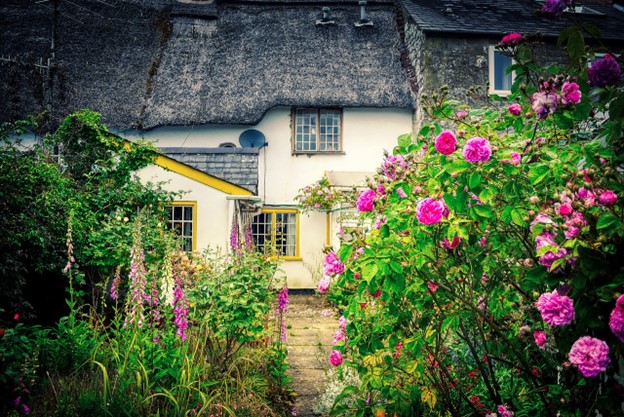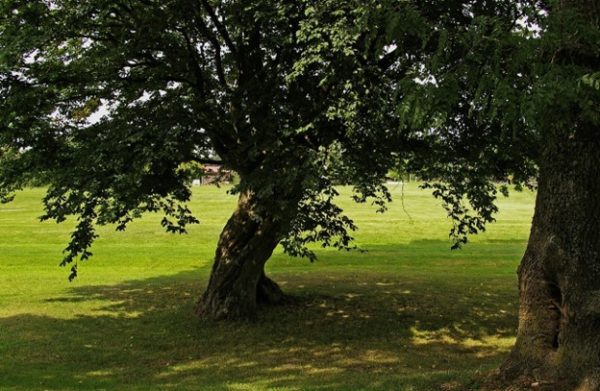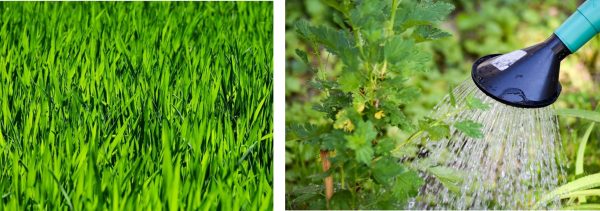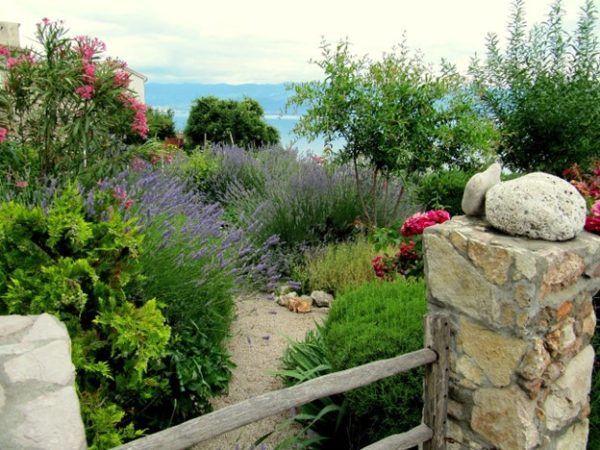Written by PhD student Megan Sherlock from SCENARIO DTP.

The classic British cottage garden, with lawns, bedding plants, and trees, may be under threat.
Research is being done to determine what plants the public should grow in their gardens in the face of climate change, as more urban gardens are being lost than ever before.

More front gardens are being paved over for off-road parking.
More and more gardens and greenspaces within the UK are being paved over or built on in favour of off-road parking and additional housing, but many people don’t understand the vast consequences this can have.
Gardens within an urban environment make up part of the urban greenspace, in addition to public parks, allotments, and street trees. Losing these gardens means losing greenspace for the entire urban environment.
Whilst the loss of these gardens is negative aesthetically, they also result in a loss of ecosystem services. Ecosystem services are benefits that humans receive from the natural environment, categorised into supporting, regulating, provisioning, and cultural. Gardens, for example, can regulate flooding. They help reduce the likelihood of severe floods occurring as taller plant material blocks rainfall from hitting the ground, while grasses and lower bedding plants form root systems in the soil for water to be stored in. This reduces the overall volume of water that enters our storm drains, preventing them from flooding as quickly.
Gardens also regulate temperatures. Plants present can reduce the surrounding air and surface temperatures by leaves blocking sunlight, and releasing water vapour which cools the air. This is why gardens often feel a little cooler than nearby buildings. Reduction of heat is vital within the urban environment, as these areas tend to be hotter than their rural counterparts due to increased heat creation by cars, buildings, and people.

Tree canopies provide shade from sunlight and shelter from rain through blocking above.
Gardens are most often thought of, however, in terms of their effect on our wellbeing. Gardens provide us with access to nature, helping us relax and recuperate from the daily stresses of modern-day life. They also invigorate our senses, focusing our minds on the world around us, rather than ourselves. The effects of gardens are so beneficial, exposure to them has even been incorporated into NHS treatments for mental health conditions!
Building new housing on, or paving over, existing gardens drastically reduces the number of plants available to provide these services, resulting in a more risky and less comfortable place to live. This is even more apparent in towns and cities, where 84% of Britons live.
Whilst it is therefore widely accepted that a green garden is better for humans than a paved one, it is less clear what types of plants would best provide these ecosystem services, and under what management intensities.
Is it better to have a short lawn or taller grass? Should we continuously prune and feed our plants, or leave them to their own devices?

Long grass and less maintenance may be better for your garden than closely manicured lawns and irrigation.
My project aims to investigate how plant choice and management can impact the ecosystem services provisioned by UK gardens. For example, is Jasmine better at reducing air temperature than English ivy? Are well-watered and fed Allium best at providing food and shelter for pollinators than one left alone?
Partnered with the RHS, my project is perfectly placed to disseminate the results with those interested, and in a position to implement change within their own gardens. Domestic gardens make up almost a quarter of all urban greenspace, so changes to their structure and composition can have lasting consequences for the urban environment, and even the country.
This project is particularly crucial right now, as an increasing number of people are looking for gardening advice to help mitigate the effects of climate change. Increasing temperatures and changing weather patterns mean that plants which once thrived in our gardens are now struggling, and amateur gardeners are having to change their preferred species to those better able to cope. Leigh Hunt, principal RHS adviser, added: “The extreme weather conditions could be a catalyst for change in what we view as a traditional British garden”.

Mediterranean gardens are better able to cope with the higher temperatures predicted for the years to come.
This gives researchers the opportunity to suggest species that are particularly drought-tolerant, or adaptable to a changing climate, to create the best-looking and hardiest garden possible. For a longer-term solution, they can also encourage gardeners to grow certain plant species which are particularly good at providing specific ecosystem services key to the fight against climate change, such as temperature regulation and flood prevention. For example, suggesting that garden-owners plant a species with larger leaves will block more sunlight and reduce the garden temperature, helping offset the 1.5C increase predicted by current global warming models.
Implementing these plant changes within urban greenspace could make a huge difference, helping to soften the potentially drastic future effects of climate change, all within the comfort of our own home.

